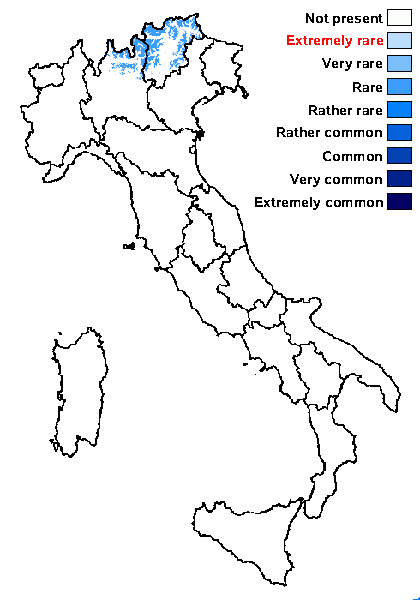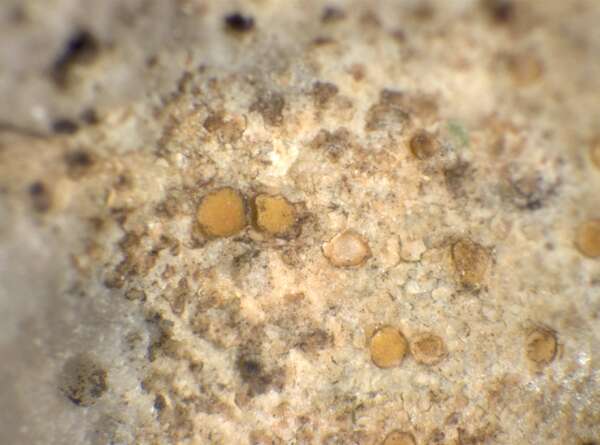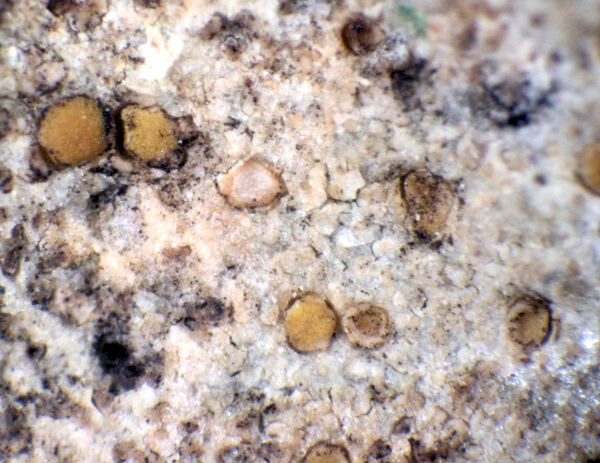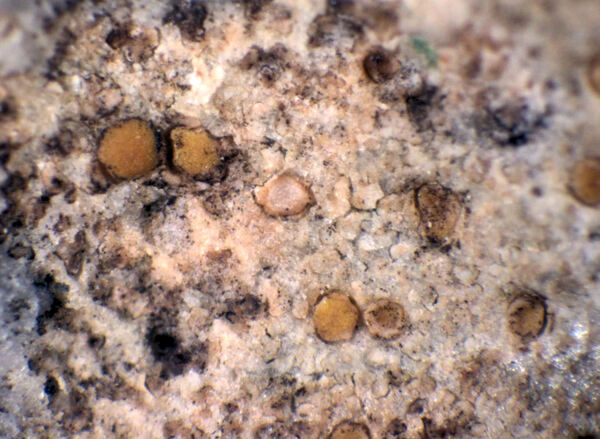Protoblastenia incrustans var. coniasis (A. Massal.) Nimis
The Lichens of Italy: 573, 1993. Basionym: Biatora coniasis A. Massal. - Atti I. R. Ist. Ven. Sc. Lett. Arti, 6, 2, ser. 3: 365, 1856.
Synonyms: Lecidea coniasis (A. Massal.) Lettau; Protoblastenia incrustans f. coniasis (A. Massal.) Zahlbr.
Distribution: N - TAA, Lomb, Emil (Tretiach & al. 2008). C - Tosc.
Description: Thallus crustose, endosubstratic, pale ochraceous brown or yellowish white, clearly differing in colour from the rock. Apothecia orange to orange-yellow, 0.2-0.5 mm across, slightly to strongly constricted at base, totally immersed in pits or slightly projecting from the rock, soon moderately convex and immarginate, the disc smooth. Proper exciple poorly developed, of colourless branched hyphae; epithecium orange-brown, with granular crystals reacting K+ purple-red; hymenium colourless; paraphyses coherent, sparingly branched and anastomosing, the apical cells hardly swollen; hypothecium colourless to pale yellow. Asci 8-spored, clavate, with a well-developed, amyloid tholus containing a more intensely amyloid, indistinct tube structure, without an ocular chamber, approximating the Porpidia- or Psora-types. Ascospores 1-celled, hyaline, ellipsoid to ovoid, 9-15 x 4-6 µm, without a distinct perispore. Photobiont chlorococcoid. Spot tests: thallus K-, C-, KC-, P-; apothecia K+ purple-red. Chemistry: apothecia with anthraquinones, mainly parietinNote: on steeply inclined surfaces of more or less calciferous rocks near and above treeline; certainly more widespread throughout the Alps, but not common, this taxon is well worthy of further study.
Growth form: Crustose endolithic
Substrata: rocks
Photobiont: green algae other than Trentepohlia
Reproductive strategy: mainly sexual
Poorly known taxon in need of further study
Commonnes-rarity: (info)
Alpine belt: rare
Subalpine belt: extremely rare
Oromediterranean belt: absent
Montane belt: absent
Submediterranean belt: absent
Padanian area: absent
Humid submediterranean belt: absent
Humid mediterranean belt: absent
Dry mediterranean belt: absent

Predictive model
Herbarium samples
Growth form: Crustose endolithic
Substrata: rocks
Photobiont: green algae other than Trentepohlia
Reproductive strategy: mainly sexual
Poorly known taxon in need of further study
Commonnes-rarity: (info)
Alpine belt: rare
Subalpine belt: extremely rare
Oromediterranean belt: absent
Montane belt: absent
Submediterranean belt: absent
Padanian area: absent
Humid submediterranean belt: absent
Humid mediterranean belt: absent
Dry mediterranean belt: absent

Predictive model
| Herbarium samples |
 DOLICHENS
DOLICHENS





